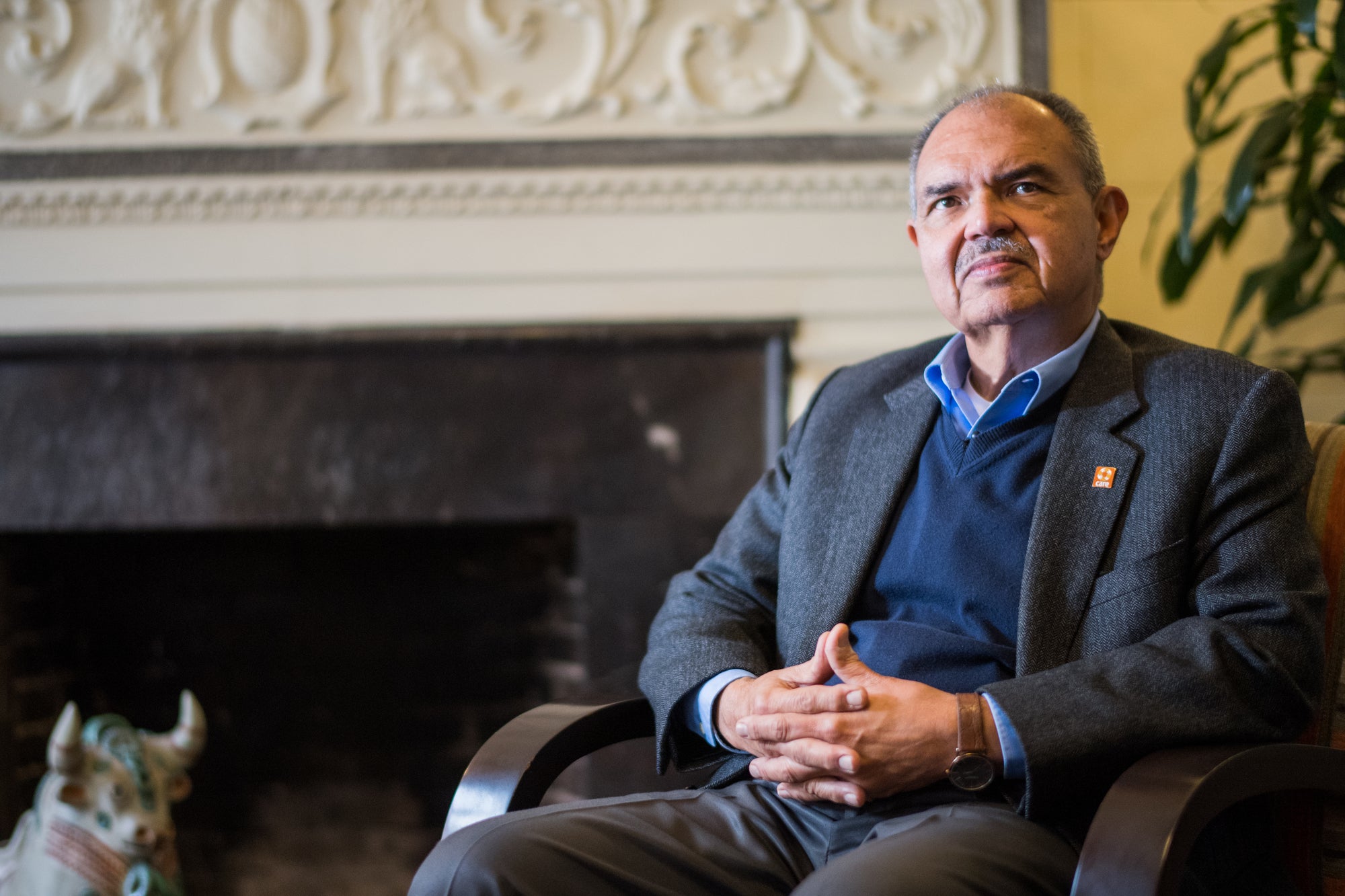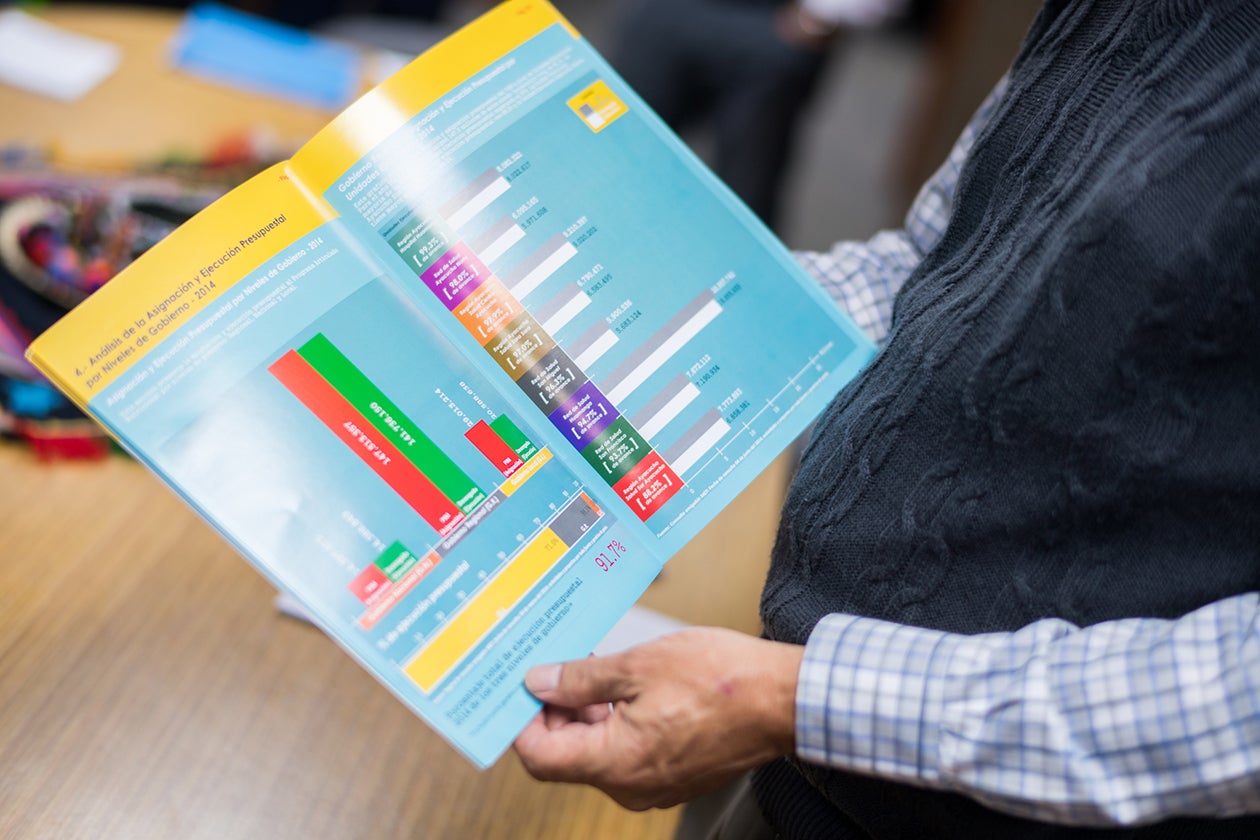This interview has been edited and condensed.
Milo Stanojevich served as Director of CARE Peru from 2005 to 2018. Under his leadership, CARE Peru helped to found the Iniciativa Contra La Desnutrición Infantil (Initiative against Chronic Infant Malnutrition, IDI), a civil society organization that united various NGOs and UN agencies to secure government commitment to combat chronic childhood malnutrition in Peru.

Interviewer
In the early 2000s, CARE created a program that had a significant impact on stunting. Can you tell us about the program and how CARE built on this success?
Milo Stanojevich
When I was appointed Director of CARE Peru in 2005, CARE had just finished implementing REDESA, a five-year, $20 million nutrition and food security program funded by USAID. It was monitored and evaluated rigorously, and turned out to be an immense, amazing success - we were able to reduce stunting by almost ten percentage points in the areas where we worked. The program was based on the premise that stunting was multi-causal and had to be addressed through a multi-sectorial approach.
Other non-profits had similar experiences around this time. We allied with other organizations, like UNICEF, Caritas, ADRA, and Prisma, to create the Initiative against Chronic Infant Malnutrition (Iniciativa Contra La Desnutrición Infantil). Each organization had reduced stunting by five to fifteen percentage points over five or so years in our respective areas of operation. We compared notes to see what worked and what did not and aligned on the key elements of an evidence-based strategy.
With the knowledge we gained from these programs, we knew we needed to engage with different parts of the government: horizontally across ministries and vertically across subnational levels of government.
To make this happen at the national level, we figured that we needed someone with authority to develop and champion a cross-ministry strategy and plan. This required the highest-level political commitment - from the President. He or she needed to say, “This is going to be a priority for our country - I’ll set up a structure to coordinate horizontally across ministries and programs and provide municipalities and communities with the support they need for implementation.”
Interviewer
How did the various organizations work together?
Milo Stanojevich
We developed common talking points to keep us speaking the same language all the time. What are the causes of chronic malnutrition? What are the consequences? How should we address the problem?
Unified philosophy, strategy, and messaging allowed us to speak with one voice while moving separately with respect to our donor and government relationships.
Working together, we saw that there are things that civil society can do that UN agencies cannot do, and vice versa. Usually, NGOs had the ability to advocate openly in a way that the UN could not. On the other hand, various UN agencies had access to the key ministers: UNICEF could speak to the Minister of Health, while the FAO could easily reach the Minister of Agriculture. The government would not necessarily listen to me, the director of an NGO, but it would definitely respond to a UN agency. The combination of partners with flexibility and focus gave us an amazing ability to reach the right person about the right subject.
Interviewer
How was the IDI able to gain commitment from government?
Milo Stanojevich
Prior to the 2006 presidential election, we approached the candidates, 19 at the time, to sign a commitment to reduce chronic malnutrition among Peruvian children. We knew that we had to get them to commit to a target that we could eventually hold them accountable to.
We came up with the 5x5x5 campaign: the goal was to reduce stunting prevalence by five percentage points for children under five over the next five years.
The target was measurable, specific and simple. The campaign was also obviously for a good cause - it was seen as noncontroversial and not political. Once we started getting a couple of candidates to sign, we would go to the others and say, "Look, so and so has signed. Don't you want to sign too?" They thought they were committing to something that was pretty mild - how could anyone be against reducing chronic child malnutrition? By April, a month or so before the elections, we had nine commitments. At that point, we went public with an announcement of the commitment.
Alan Garcia, the candidate eventually elected president, committed to the target. He followed through on his promise and more. Since then, advocacy groups have learned to push for specific targets - commitments with specific targets are much more common nowadays.
Interviewer
How did you focus the government’s attention on key interventions and hold them accountable?
Milo Stanojevich
A couple months after the public commitment, we gave the government a set of ten recommendations that we thought were key for implementing a national strategy against chronic malnutrition: Recommendations for Your First 100 Days.
It was to those recommendations that we held them accountable: once a year, we put out a scorecard that highlighted the government’s successes and failures. "Look, this is where we think you're doing well. These are green. This is where you haven't moved far enough. This is yellow. And, this is where we think that you have fallen behind, they're red." All of the heads of the UN agencies and NGOs signed the scorecard, and we sent it to the president and ministers every year right before the president’s annual address before the Congress in July.
Among the recommendations we suggested, one of the most important involved establishing a czar for nutrition to coordinate the work across ministries and levels of government. The president did not do this right away, but in his second year in office, he put the prime minister in charge of establishing a nationwide nutrition strategy that eventually developed into the Crecer National Strategy. In 2007, President Garcia invited all of the regional governors to Lima and presented them with the Crecer strategy. Through the Lima Declaration, governors affirmed their commitment to national goals, agreed to the strategy, and made their own regional commitments. They then returned home to gain buy in from local governments. Over the next three or four years, regional governments adapted the national strategy to their own contexts. Many of the organizations that formed the IDI provided technical assistance to different subnational governments to implement the national nutrition strategy.
ADDITIONAL READING:

Interviewer
What would you recommend to other leaders in global health seeking to reduce childhood stunting?
Milo Stanojevich
Invest in really good data. It enables government to allocate budget in the right places. Peru went from conducting Demographic and Health Surveys (DHS) every three to five years to doing annual surveys. We insisted that samples collected be large enough to enable us to look at what was happening in every one of the 25 different states in the country. Having data come out annually, both nationally and at the sub-national level for every region in Peru, was huge. We could track the budget, track the data, and incorporate it into the accountability reports that we fed back to the government every year.
When Alan Garcia’s term was over, we convinced the next government to continue with this work - this was going to be a ten- or twenty-year endeavor. In 2011, we advocated Ollanta Humala’s government to continue doing what we knew worked and fix what hadn’t worked so well. We wanted to make sure that they didn’t start from scratch. We helped convince the new administration to incorporate childhood malnutrition efforts into its transition planning and offered to advise them: “Look, we can help you work on malnutrition - there are some things that have been working really well, and we should keep them.” On top of this, we continued talking to the outgoing Garcia administration to make sure that our message would be reinforced: “these things you accomplished are really important - make sure to include them in your transition plans.”
